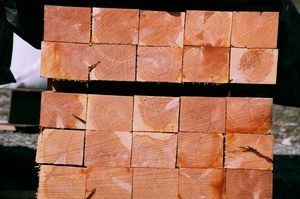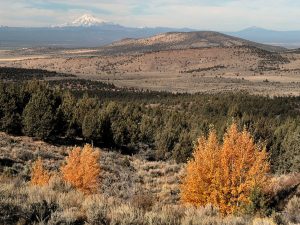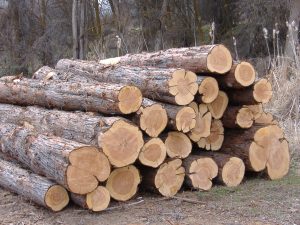11 Nov Desert Rain: the first in Central Oregon to use Juniper as an Alternative to Pressure Treated Lumber
 We have been working closely with Parr Lumber, in Bend, to identify and source an alternative to Pressure Treated (PT) Lumber for the Desert Rain Project. This Living Building Challenge project has pushed us and out suppliers to look at every aspect of building in a new way. Traditionally, PT is used for under-floor framing (areas where wood beams come in contact with concrete) because it has moisture resistant attributes. We are closely examining juniper as an alternative to PT because it is so sustainable, environmentally friendly and chemical free.
We have been working closely with Parr Lumber, in Bend, to identify and source an alternative to Pressure Treated (PT) Lumber for the Desert Rain Project. This Living Building Challenge project has pushed us and out suppliers to look at every aspect of building in a new way. Traditionally, PT is used for under-floor framing (areas where wood beams come in contact with concrete) because it has moisture resistant attributes. We are closely examining juniper as an alternative to PT because it is so sustainable, environmentally friendly and chemical free.
Chemically Free
Fortunately the chemical compounds that are used to treat PT have been improved over the years. Several common waterborne preservatives are: Alkaline Copper Quat (ACQ-C, ACQ-D, ACQ-D Carbonate), Micronized Copper Quat (MCQ), Copper Azole (CBA-A & CA-B) and Sodium Borates (SBX/DOT). In an effort to avoid the use of Arsenic, Chromated Copper Arsenate (CCA-C), is no longer commonly used. None-the-less, chemicals are still required to make Douglas Fir or Ponderosa water resistant. On the other hand, Juniper is naturally more resistance to decay than even Redwood or Western Red Cedar. In fact, Western Juniper is the most pest and rot resistant wood species in the Pacific Northwest.
 Environmental Benefits of Harvesting Juniper:
Environmental Benefits of Harvesting Juniper:
A Juniper in its peak of growth can consume over 100 gallons of water per day, causing already scarce water resources to run dry. Western Juniper is an opportunistic and invasive species, literally taking over land and water resources, and disrupting fragile ecosystems. Since the days of modern fire suppression in Central and Eastern Oregon, Juniper has grown. Within the last 150 years Western Junipers range has increased over ten-fold. Agencies, non-profts, and watershed councils have spent years and considerable taxpayer dollars developing strategies to reduce Juniper populations with limited success. For decades it has been cut based on the needs of grassland, watershed, and forestland restoration/reclamation projects. We have only recently begun to commercially harvest Western Juniper.
The negative effects of unchecked Juniper growth have many people looking for sustainable outlets. Small companies in our region have cut and milled Juniper for furniture, fence posts, etc. But until very recently, it has not been used as a structural component in the construction industry. Last year, the Building Codes Division passed a Statewide Alternative Method document that allows juniper heartwood to be used for applications where other naturally durable woods are accepted, including as sill plate. There are specifications: the wood used has to be heartwood; sapwood is permitted if 90% or more of the width of each side of the board is heartwood. The Deschutes County Building Division confirms that Oregon State code applies in Bend and builders are allowed to use juniper as an alternative naturally durable wood.
A First for Bend
Although the use of Juniper is allowed, Deschutes County hasn’t heard of any local projects that have done so yet. So…Desert Rain should be the first to do so in Central Oregon and will be perhaps only the second in the state.




